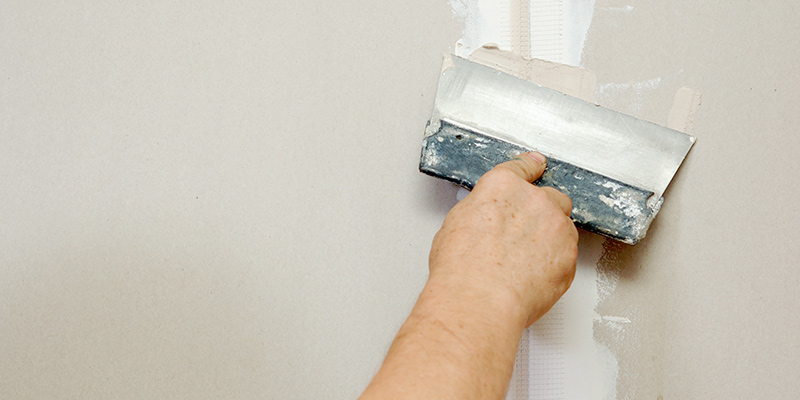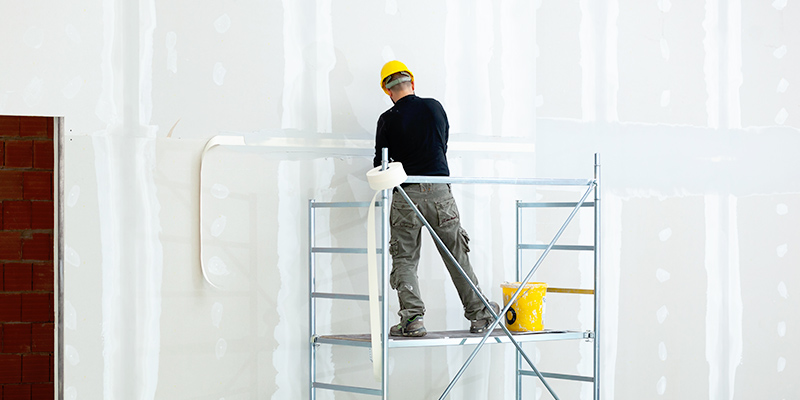Drywall is a great building material, but it’s relatively easy to damage. Maybe you’re missing a doorstop on one of your rooms and one of your energetic kids has swung a doorknob into the wall, or perhaps you’ve made a nice gash with the corner of a table while moving some furniture around. Regardless of the cause of the damage, repairing a hole in the drywall is an easy task.
Drywall Repair Tips

Keep Reading
1. Secure the Backer Board
This is a medium-sized hole, and it’s impossible to simply fill the void with a compound. I need to add a new piece of drywall and to fasten the drywall, I need some sort of backing or furring strip. To accomplish this, I slide a piece of 1/4″ plywood into the hole.
2. Cut a New Piece of Drywall
Use your utility knife and/or drywall saw to cut a new piece of drywall that fits into the hole.
3. Cover the Joints with Tape
I covered the entire new piece of drywall and all the edges with mesh tape. Often you’ll see people cover the screw heads too (which is fine but I didn’t).
4. Mix Compound and Apply First Coat
It doesn’t take many compounds to cover a hole like this. I mixed a little powder and water until the compound had a thick, “mashed-potato” consistency. This is important because if the compound is too wet, it’ll result in a poor bond. Sloppy mud is also a pain to work. Keep adding powder (or water) as necessary until you are satisfied.
Using the 6″ drywall knife, I applied the first coat. Make sure you embed all the mesh tape and try to eliminate any air pockets.
5. Second Coat
While the first coat dried, I mixed up another small batch of compound. I didn’t bother to sand in between the first and second coat, using my knife to check for any high points. If you’re really good at patching, you can finish everything off in two coats. I fully expected to need a third coat. After the second coat dried, I used 100 grit sandpaper to feather the edges. The goal is to create a seamless transition so you’ll never know the wall was damaged.
6. Final Coat
When you apply the final coat, try to make it as smooth as possible. It’ll save you from having to do a lot of sanding.
7. Sand Smooth
Feather all the edges by sanding them smooth, and give the rest of the patch a once-over to eliminate any dimples or ridges. Feel everything with your hand to make sure it’s all even.








Leave a Reply